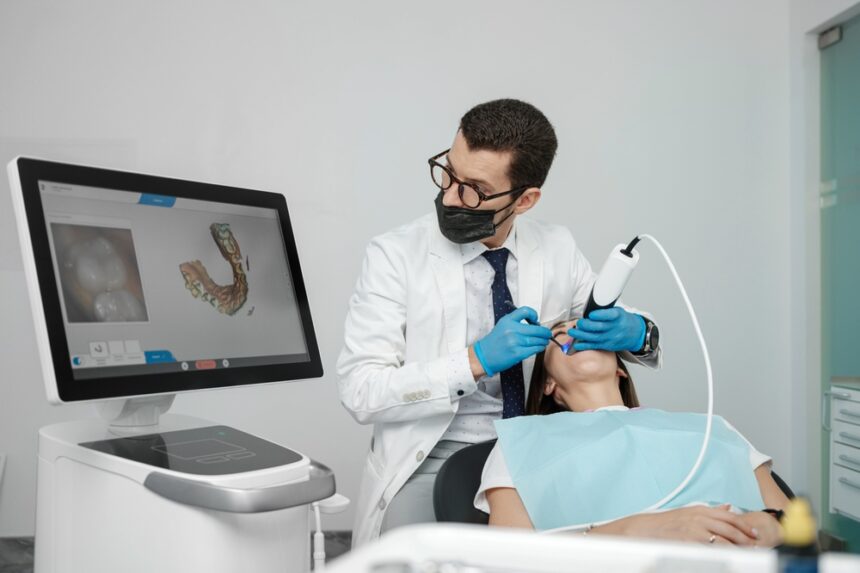The distinct sound of the dentist’s drill often triggers anxiety for even the sturdiest patient. Yet, while dental drills have a lengthy history, digital integration offers new promise in upgrading this critical tool. As digital dentistry continues advancing, the future assures more precise, controlled, and patient-friendly drilling.
The Evolution Of Dental Drills
Early dental drill technology relied solely on manual power and skill, unlike today’s modern family dentist practices. However, by the mid-19th century, many dental practitioners adopted engine-powered dental drills. These drills increased productivity but also introduced new risks like tissue damage from uncontrolled vibration and heat.
While air turbine drills, introduced in the mid-20th century, allowed for variable speed, even contemporary electric models still pose limitations. Patients commonly report discomfort, even when minimally invasive techniques aim to preserve healthy tooth structure. This reveals a critical need to refine dental drills through digital integration.
Here, next-generation dental technology comes into play. With computer-aided design (CAD) and computer-aided manufacturing (CAM), drill bits can now feature optimized geometry. The software even allows customization for factors like the specific tooth structure, materials used, and desired hole shape. As digital dentistry expands, dental professionals and patients edge closer to a new era of precision drill design.
Introducing Digital Drill Design
Digital dental drills showcase marked differences from their traditional predecessors. With integrated sensors, feedback loops, and designed-in features, the latest drill models upgrade performance across multiple vectors:
1. Optimized Cutting
New digital dental drills leverage CAD software to design optimized blade geometries for specific procedures. Unique bevel angles, blade curvatures, and tip shapes maximize performance, whether shaping enamel or sculpting a dental crown. For instance, a rounded cutting tip with curved coplanar edges reduces invasiveness in crown preparation. It also reduces material fracturing versus traditional triangular cutting patterns.
Intelligent control software assists dentists by providing enhanced guidance based on digital plans. This prevents wandering deviations outside the planned cutting area that risk hitting vulnerable soft tissues, nerves, or tooth roots. The drill also pauses and alerts the dentist if it detects any deviation from the intended trajectory.
2. Vibration and Heat Reduction
Onboard accelerometers and infrared sensors continuously quantify vibration, temperature, and torque levels during drilling. If thresholds exceed safe ranges, suggesting potential tissue trauma, the drill automatically increases coolant flow. It also incrementally lowers motor speed – all while preserving just enough power to progress efficiently.
Vibration dampeners and improved chuck designs absorb disruptive vibrations along the drill stem. Soft tissue trauma and related inflammation risks are curtailed as a result. Bearings also see upgrades with more corrosion-resistant, high-heat capacity materials that prolong smooth performance.
3. Real-Time Feedback and Control Systems
Integrated sensors continuously measure the drill tip’s location and orientation against its digital plan. Millimeter-level deviations can be detected and automatically corrected by built-in microactuators. This tight feedback loop prevents wandering as cut depth and direction closely match the predetermined surgical blueprint.
On-tool cameras provide real-time intraoral views, giving dentists an extra visual control layer. Smart warnings alert them should high-risk structures come too close, enabling manual corrections as needed. Throughout procedures, it provides that invaluable second set of digital eyes for refined safety.
4. Integration with Digital Scanning and Treatment Planning Software
The proprietary drill design software directly integrates each patient’s detailed intraoral scans. The system considers factors ranging from tooth dimensions to the unique vulnerability of nearby nerves, vessels, and sinuses. It then engineers specialty drill bits customized per the procedure type needed, from simple cavity drilling to complex canal navigation.
Digital workflows extend to the operating room, with drill systems accessing patient scans and plans in real time. Guided navigation helps dentists confirm target sites, recheck planned drill trajectories, and monitor progress through various anatomical layers.
Benefits Of Digital Drills
Upgraded digital dental drills confer advantages for dentists, patients, and the overall industry.
1. For Dentists
Dentists achieve greater precision, control, and efficiency. With streamlined workflows, even complex procedures see both productivity gains and improvements in outcome quality. Patient discomfort also reduces.
2. For Patients
Patients experience quicker procedures alongside enhancements to care quality and tooth preservation. With minimized trauma comes reduced pain, anxiety, and recovery times.
3. For the Dental Industry
As minimally invasive techniques progress, digital transformation supports better overall access and quality of care across dentistry. The future looks bright for accessible dental health through precision technology.
The Future Of Digital Drill Design
Ongoing innovation will further unlock the potential of digital dental drills. With AI-powered decision-making, robot-assisted movements, and biocompatible materials, drills edge closer toward autonomous functionality. Research is addressing size and integration challenges, aiming for smooth and near-pain-free procedures with smart drill systems.
While digital tools showcase remarkable promise in upgrading dental care, patients and dentists must also acknowledge certain limitations. Cost barriers currently restrict access, while data privacy and device security require ongoing vigilance. Through continued research and responsible development, however, precision drill systems can evolve into more equitable and trusted forms.
Conclusion
The famous dental drill may be a sound destined for obsolescence. With digitally enhanced precision, efficiency, and patient care, the future looks bright for the next generation of dental technology.
As digital transformation reaches more practices, patients everywhere stand to benefit from more advanced, minimally invasive techniques. The drilling experience most have come to dread may soon become more comfortable.

